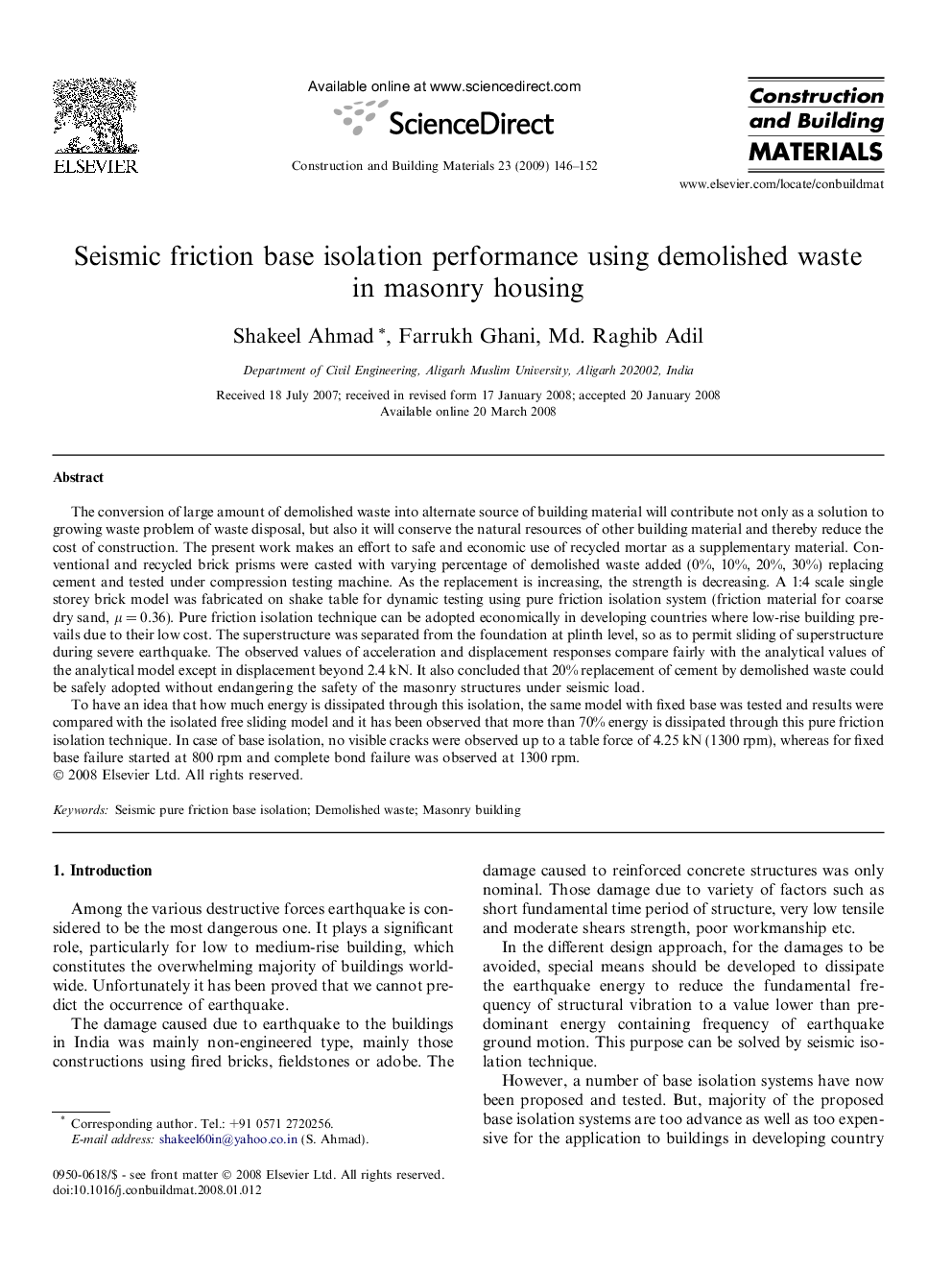| کد مقاله | کد نشریه | سال انتشار | مقاله انگلیسی | نسخه تمام متن |
|---|---|---|---|---|
| 260654 | 503667 | 2009 | 7 صفحه PDF | دانلود رایگان |

The conversion of large amount of demolished waste into alternate source of building material will contribute not only as a solution to growing waste problem of waste disposal, but also it will conserve the natural resources of other building material and thereby reduce the cost of construction. The present work makes an effort to safe and economic use of recycled mortar as a supplementary material. Conventional and recycled brick prisms were casted with varying percentage of demolished waste added (0%, 10%, 20%, 30%) replacing cement and tested under compression testing machine. As the replacement is increasing, the strength is decreasing. A 1:4 scale single storey brick model was fabricated on shake table for dynamic testing using pure friction isolation system (friction material for coarse dry sand, μ = 0.36). Pure friction isolation technique can be adopted economically in developing countries where low-rise building prevails due to their low cost. The superstructure was separated from the foundation at plinth level, so as to permit sliding of superstructure during severe earthquake. The observed values of acceleration and displacement responses compare fairly with the analytical values of the analytical model except in displacement beyond 2.4 kN. It also concluded that 20% replacement of cement by demolished waste could be safely adopted without endangering the safety of the masonry structures under seismic load.To have an idea that how much energy is dissipated through this isolation, the same model with fixed base was tested and results were compared with the isolated free sliding model and it has been observed that more than 70% energy is dissipated through this pure friction isolation technique. In case of base isolation, no visible cracks were observed up to a table force of 4.25 kN (1300 rpm), whereas for fixed base failure started at 800 rpm and complete bond failure was observed at 1300 rpm.
Journal: Construction and Building Materials - Volume 23, Issue 1, January 2009, Pages 146–152